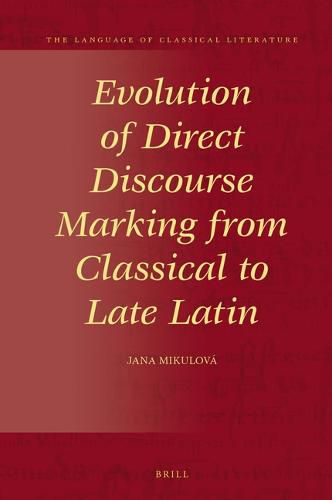Readings Newsletter
Become a Readings Member to make your shopping experience even easier.
Sign in or sign up for free!
You’re not far away from qualifying for FREE standard shipping within Australia
You’ve qualified for FREE standard shipping within Australia
The cart is loading…






If you read a work by Cicero or Seneca and then open The Pilgrimage of Egeria, Augustine, or Gregory of Tours, you will soon notice that Late Latin authors quote authorities differently. They provide a perfect example of synthesising two potentially conflicting traditions - classical and biblical . This book examines how the system of direct discourse marking developed over the centuries. It focuses on selecting marking means, presents the dynamics of change and suggests factors that might have been at play. The author guides the reader on the path that goes from the Classical prevalence of inquit to the Late innovative mix of marking words including the very classical inquit, an increased use of dico, the newly recruited ait, and dicens, influenced by biblical translations. The book suggests that Late authors tried to make reading and understanding easier by putting quotative words before quotations and increasing the use of redundant combinations (e.g. he answered saying ).
$9.00 standard shipping within Australia
FREE standard shipping within Australia for orders over $100.00
Express & International shipping calculated at checkout
If you read a work by Cicero or Seneca and then open The Pilgrimage of Egeria, Augustine, or Gregory of Tours, you will soon notice that Late Latin authors quote authorities differently. They provide a perfect example of synthesising two potentially conflicting traditions - classical and biblical . This book examines how the system of direct discourse marking developed over the centuries. It focuses on selecting marking means, presents the dynamics of change and suggests factors that might have been at play. The author guides the reader on the path that goes from the Classical prevalence of inquit to the Late innovative mix of marking words including the very classical inquit, an increased use of dico, the newly recruited ait, and dicens, influenced by biblical translations. The book suggests that Late authors tried to make reading and understanding easier by putting quotative words before quotations and increasing the use of redundant combinations (e.g. he answered saying ).